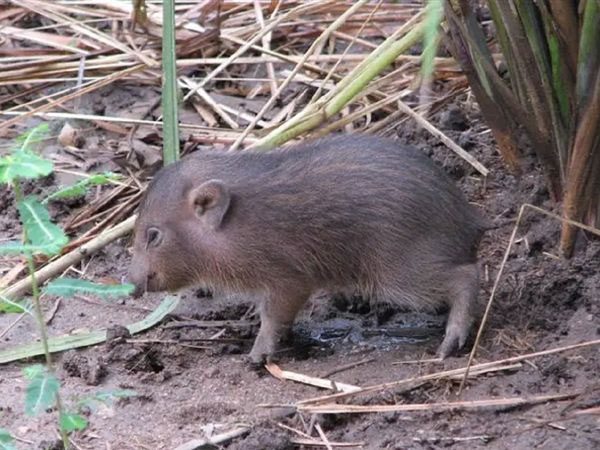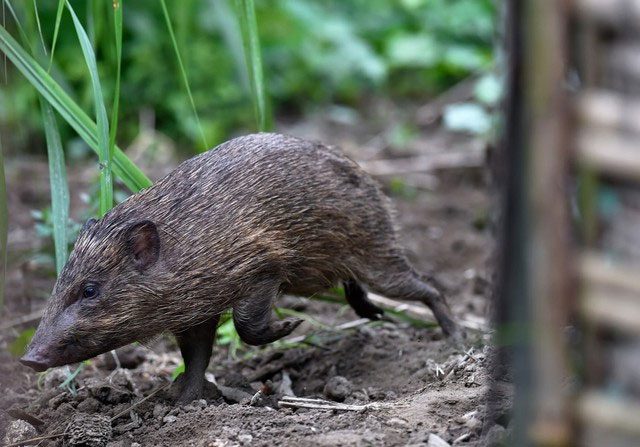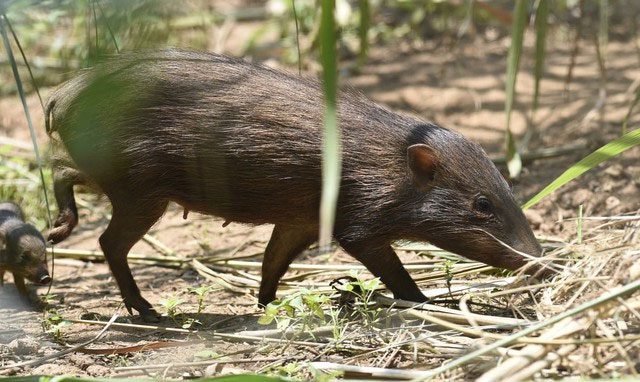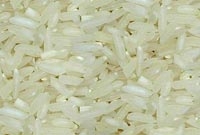Our planet is home to many different species of pigs, some of which can weigh over a ton. Among these, there exists a species of pig that, once fully grown, weighs no more than 10 kg.
The world’s smallest pig was first discovered in 1857, but its population gradually declined in the following decades and was once thought to be extinct.
The Pygmy Pig – the smallest pig in the world originates from the fertile grasslands at the foothills of the Himalayas. This animal is known for its rather shy nature.
However, it was rediscovered in the 1970s by conservationists, who planned to breed this tiny pig in the 1990s to boost its population.

They stand about 20cm tall and weigh no more than 9kg.
The scientific name of the Pygmy Pig is Porcula salvania, also known by other names such as dwarf pig or miniature wild pig. They have a long, pointed head, a short, round, and compact body, with a gray-brown skin covered in dark brown hair. When piglets are born, their skin is pinkish-gray and weighs less than 250 grams, roughly the size of a regular apple. Their fur gradually changes to brown with many yellow stripes as they grow.
Adult dwarf pigs have longer hair but a short tail, measuring only 3cm. Their mouths feature four continuously growing tusks, with the upper tusks of adult males protruding from their lips. Females have only three pairs of nipples on their abdomen, which is quite different from other pig species. They stand about 20 cm tall and weigh no more than 9 kg.
The main habitat of the dwarf pigs is dense grasslands. They particularly enjoy living in riverine pastures; due to their small size, they can hide in the grass, spending most of their day foraging for food. Like other pigs, they are omnivorous.

The gestation period for sows is usually about 100 days.
Most dwarf pigs live in groups of 4 to 6, although some groups can have over 20 members. However, adult male dwarf pigs spend most of their time alone and only join groups with adult females during mating and reproduction.
The gestation period for sows is typically around 100 days, significantly shorter than that of other pig species (which is mainly around 5 months). Their lifespan is usually about 10 to 12 years, also shorter than that of other pigs.
Dwarf pigs often construct nests very similar to those of rabbits. They will use their snouts to dig a long hole lined with dry grass underneath. When weather conditions are poor or during the colder seasons, they tend to hide in these cozy nests.
Some of you may have heard that tea pigs are also quite small; however, this breed is selectively bred and the breeding process is relatively complex. Moreover, tea pigs can weigh up to 30 kg or even more when they reach adulthood, which is significantly larger than dwarf pigs.

Dwarf pigs often have communal nests very similar to those of rabbits.
They have once again become a part of the ecosystem in Assam, according to a report by National Geographic.
The report further states that the pigs were kept in captivity before being released in Assam. Following conservation efforts, their population has increased to 300-400 in the wild, while 76 remain in captivity.
A large number of these smallest pigs in the world have been released in the Manas and Orang National Parks. Some have been released in the Barandi and Sonai Rupai National Reserves in Assam.
The report notes that the pigs began reproducing there over two decades ago, with up to 130 of these small animals having been released in these locations from 2008 to 2020.

Adult dwarf pigs have longer hair but a short tail, measuring only 3cm.
Currently, there are a few remaining populations in Manas National Park in Assam, but they are threatened by competition for food with other species and the risk of grassland fires during the dry season.
Parag Deka, project director of the Pygmy Hog Conservation Program based in Guwahati, stated that there are plans to release at least 60 more pigs into Manas over the next five years.
“It is very important for me to continue to save this species from extinction. We should all seek a purpose in life. When I got involved in this project, I realized that this could provide me with that purpose,” Deka said.




















































